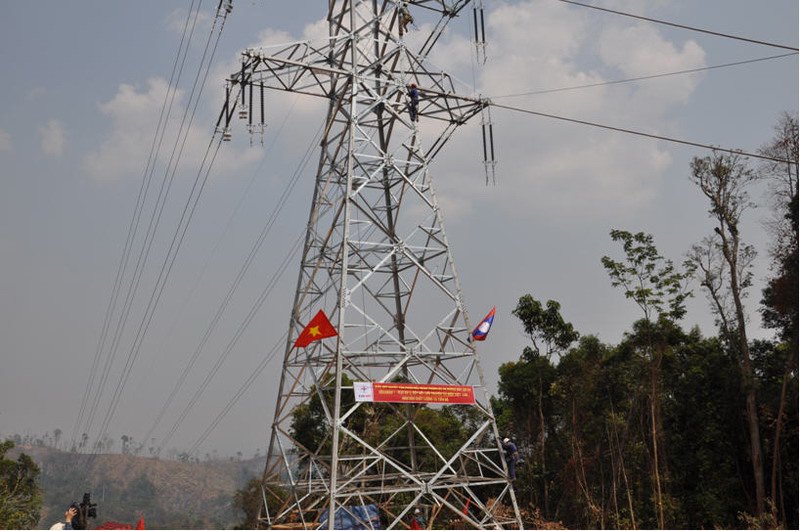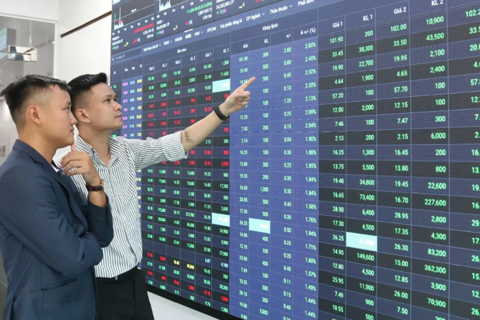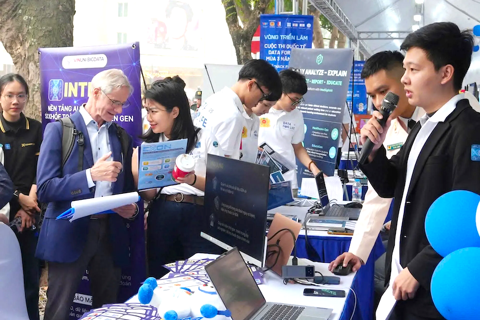Vietnam set to increase power imports
Vietnam is pushing for double-digit economic growth in the coming years, which is expected to drive annual electricity demand growth of 12-14%.
Vietnam's Ministry of Industry and Trade (MoIT) plans to increase electricity imports from China and Laos by an additional 3,000 MW and 2,500 MW, respectively, by 2030, a rise of 1.5 to five times from the current plan.
| Transmission line from the Nam Mo - Tuong Duong joint power development project between Vietnam and Laos. Photo: EVN |
The figures were mentioned in the latest draft amendment to the Power Development Plan VIII (PDP8), as the government aims for double-digit economic growth in the coming years to achieve high-income status by 2045. To support this goal, annual electricity demand is expected to grow by 12 to 14%.
In the revised PDP8, the MoIT projects that Vietnam’s power system will need to reach 210,000 MW by 2030 and expand to 840,000 MW by 2050, an increase of 35% and 50%, respectively.
In addition to domestic energy sources such as hydropower, gas-fired power, and renewables, electricity imports are being considered as an option to ensure energy supply amid rapid economic growth. According to the ministry’s scenario, imported electricity could account for 5% of total installed capacity by 2030, up 1.7% from the current plan and higher than the estimated 4% by the end of 2024.
Specifically, the MoIT proposes to import around 3,700 MW from China by 2030, an increase of 3,000 MW from PDP8.
Vietnam Electricity (EVN) is currently negotiating to increase electricity purchases from China by 2.4 billion kWh, with a capacity of 730 MW, for the period until 2026. From 2027 to 2028, the annual purchase volume could rise to approximately 19 billion kWh, with a capacity of 4,100 MW.
EVN is also exploring the possibility of purchasing an additional 3,000 MW of power from China via substations along the Vietnam-China border, with an estimated output of 15 billion kWh per year. If approved, this power would be connected to the 500 kV Lao Cai substation and transmitted mainly via the planned 500 kV Lao Cai - Vinh Yen transmission line, which is expected to be operational by early 2026.
However, the MoIT noted that there are no firm commitments regarding electricity imports from China. "In the coming period, the relevant authorities of both countries need to continue negotiations, clarify details, and finalize agreements as soon as possible," the ministry stated. It added that economic and technical feasibility studies on the scale of electricity imports from China would also be conducted.
Besides China, Vietnam is considering increasing electricity imports from Laos, targeting 6,800 MW by 2030 in a high-growth scenario. This figure is nearly 1.6 times higher than the 4,300 MW capacity outlined in the PDP8.
Vietnam is able to import electricity from these neighboring countries due to their energy surpluses, particularly in hydropower, and their plans to export electricity. According to the MoIT, electricity imports have risen steadily in recent years, reaching five billion kWh by the end of 2024. However, in 2021, imported electricity volume dropped to about 1.4 billion kWh due to a temporary suspension of purchases from China.
Currently, Vietnam imports approximately 1,000 MW of electricity from Laos through 220 kV transmission lines. Under an agreement between the two governments, total imports from Laos are expected to increase to between 5,000 MW and 8,000 MW by 2030.
From China, Vietnam purchases electricity through two 220 kV transmission lines, Malungtang - Ha Giang and Maquan - Lao Cai, mainly during the dry season. These lines have a total capacity of around 550 MW and supply between two and three billion kWh annually.
Alongside electricity imports, the MoIT, in its proposed adjustments to PDP8, has outlined scenarios for expanding domestic power sources by 2030. Compared to the current plan, the country is expected to add 30,000 MW of solar power, 5,700 MW of small hydropower, and 6,000 MW of onshore wind power.











